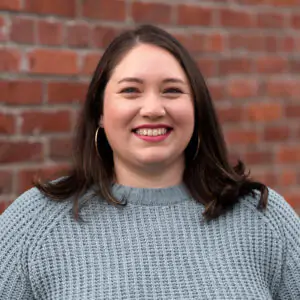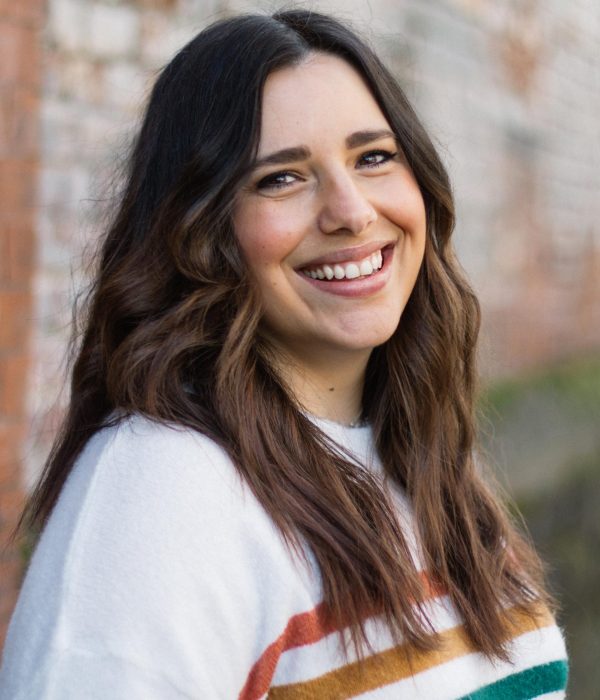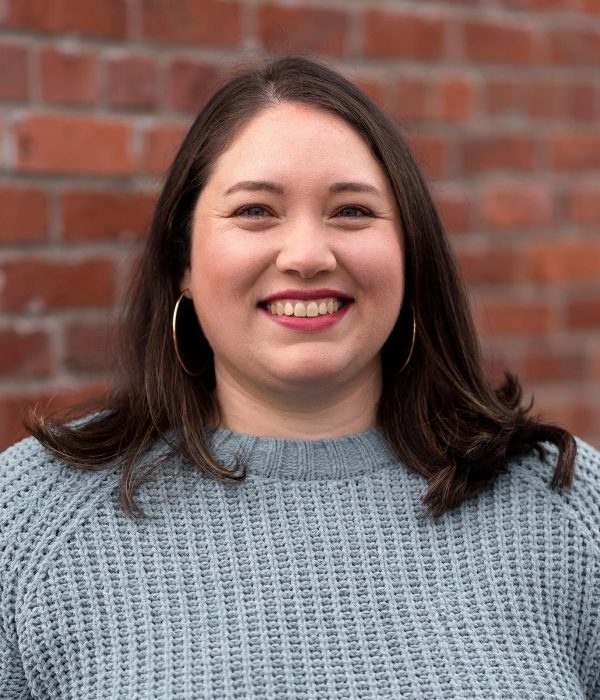
Food Equity Manager
Autumn leaves. Photo credit: Fineas Anton/Unsplash
Latinx Heritage Month—or Hispanic Heritage Month, as it’s nationally known—comes to a close today, but for the diaspora, the process to understand personal identity, to dismantle colonial words, and build ancestral connections is lifelong. Below, three Ecotrust team members share vulnerably about who they are, their reflections about this month, and their recommended readings.
My name is Heldáy de la Cruz, and I am the Senior Designer at Ecotrust. The name Heldáy (pronounced like “el-dye”) means rustic earth. I come from El Jazmin, México, a small town at the base of the Volcán de Colima. As a Mexican national who emigrated to the United States, my identities feel layered and complex. As I continue to learn about the history and brutality of colonization, my identities grow in different directions.

Heldáy de la Cruz.
As an artist, I am hyperconscious of both the pros and cons of being highlighted or featured on other platforms. I have seen the ways in which highlighting historical figures, activists, and artists can bring forth learning and new support through exposure. At the same time, I can feel the hollowness and performative aspects of highlights, ones that are done for the sake of doing them and with no real intention of continued commitment to showing up for the Latines whose images are used. It’s a complicated situation, and one that happens with every identity that is tied to a month framed as celebration.
Neither feels quite right, to be completely honest. At times, I choose to use Latinx or Latine, but never Hispanic. To me, the term Hispanic is directly tied to colonial structures meant to encapsulate various identities in Latin America into one, on the basis of the Spanish language. This is a form of erasure and a quiet way of marginalizing cultures and groups within these countries. Framing these imposed identities under one umbrella, leaves no room for intersectionalities and opens the door to anti-Blackness, colorism, white supremacy, and white/white-passing privilege. Truthfully, the same could be said about Latinidad, which is why it feels so complicated to me. You grow up being told one thing and have to learn for yourself what it really means—not just the pride, but the harm that can come along with it.
At this point in my life and my learnings, I identify within the diasporic spectrum of Latinidad that was forced of my indigeneity. It’s the only way I can succinctly describe my experience. Subsequently, we can’t talk about Latinidad or Hispanic identity without talking about Indigeneity. Indigeneity in México is different from indigeneity in the United States, though both have the simultaneous history of colonization, split only by a border. The issue is made more complex therein, because to want to claim or to want to be claimed by an indigenous group is not a simple transaction, it comes with intention, trust, relationships, knowledge of culture, respect, and historical understanding of the populations we’re talking about. How does this work for folks who feel the diaspora? That’s the question that I will continue to figure out how to answer.

Felicia Murray.
My name is Felicia (Aguilar) Murray, the new Donor Engagement Manager at Ecotrust. Born in South Los Angeles, I spent a large portion of my childhood in rural Iowa, where I was the only non-white kid in my school and region. With a Mexican father and white mother, I spent a lot of time getting comfortable (or sometimes quite uncomfortable) in the area of “other.” As soon as I could, I moved back to Southern California where I found refuge and community. In 2016, my partner and I chose to create a home in the Pacific Northwest; we love it here. I strive to be an eternal student, and that certainly applies to ongoing learning about my heritage.
Neither. I’ve always identified as Xicana/x or Mexican-American. Where I was born, Xicana/o/x is common terminology, but it is not widely known in most of the country. My self-discovery as it relates to identity is only in its infancy. As I continue to learn and grow, I am allowing myself the space to explore these complicated issues in a vulnerable way.
I relate to this great article by Tracy Castro-Gill titled “I ain’t white. Confessions of a mixed-race Xicana” in a huge way. Tracy writes, “Chicanos, now Xicanx, have existed in the southwestern region of North America in various forms, first as indigenous people, then as colonized Mexicans, and now as a political group of people with indigenous ancestry who reject our European roots…Xicanx is an identity that fits my experiences living between two worlds, both of which reject me because of my mixed-race heritage and because of geography; I am not American, because that is reserved for white people, and I am not Mexican because I was not born on the other side of the border.”
Civil rights icon Dolores Huerta – you can learn more here.
My name is Yolimar Rivera Vázquez. I usually describe myself as a Puerto Rican living in the Seattle area. I was born and raised in the Caribbean island of Borikén (the Taíno/Indigenous name of the island). I identify as Boricua/Puerto Rican. I am of mixed race. My ancestors include Spanish colonists, enslaved African people, and the Indigenous Taíno people of Borikén.

Portrait of Yolimar Rivera Vázquez. Photo credit: Alejandro Sánchez Ochoa
Pursuing a graduate degree in environmental science and seeking economic opportunity and stability led me to move to Washington, where I have lived for nearly a decade. At Ecotrust, I hold the role of Food Equity Coordinator where I work on building relationships with and shifting power and resources to Black, Indigenous, and people of color communities in the Puget Sound area. I also work in a variety of projects to support (1) business viability of small and mid-sized farming, ranching and fishing businesses across Ecotrust’s bioregion, (2) increased local food purchasing by institutions (i.e., hospitals, schools, etc.), and (3) creative solutions to land access.
To understand the difference between Hispanic and Latinx. I’m not sure why it’s still called Hispanic heritage month, when we mostly celebrate the wide array of cultures and history of Latin America. Yes, Latin America has some connections to Spain, but it’s not all that identifies the peoples of this region. If anything, I would encourage folks to learn more about the rich and diverse history of the multitude of cultures that make up Latin America.
From the perspective of living in the United States, I only use Latino/a/x. There is no present reason for me to highlight the colonial ties some Latin American countries had historically with Spain by using the word Hispanic. That said, Latinidad is highly complex and perhaps we shouldn’t even talk about it, as each Latin American country has so many different cultures, ethnicities and languages. Latinidad is not a one-fits-all or even one-fits-a-few. I prefer to use country of origin instead (e.g., Puerto Rican, Mexican, etc.). I use the term Latinx most when interacting with governments, nonprofits, and other agencies, but always have to ask them about who exactly the group we are talking about is. I use Latinx to be inclusive of different genders. I also use the term Latino/a/x when people self identify as such.
I am most inspired by my Puerto Rican friends who are pursuing their dreams and making them a reality despite the economic crises that our home country has been experiencing since before folks in my generation were born. I am also inspired by the community of Puerto Ricans in the island and the diaspora that are challenging colonial and American assimilation narratives and fighting for Puerto Rico’s sovereignty. Lately, I am also inspired by the food sovereignty work of the Güakiá Agroecologic Collective and Proyecto Mi Plantita, and the work of Aurora Levins Morales, who I just discovered.
Article
An article by Heldáy’s dear friend Alan Pelaez Lopez
Poem
A poem by Heldáy’s good friend Yosimar Reyes
Article
An article by Marissa Reyes-Díaz about Güakiá, recommended by Yolimar
Book
A book by Nelson Denis about the colonial US-Puerto Rico relations, recommended by Yolimar
Article
An article by Israel Meléndez Ayala and Alicia Kennedy, recommended by Yolimar
Article
An article by Tracy Castro-Gill, recommended by Felicia
Article
An article about Dolores Huerta by Maria Goody, recommended by Felicia